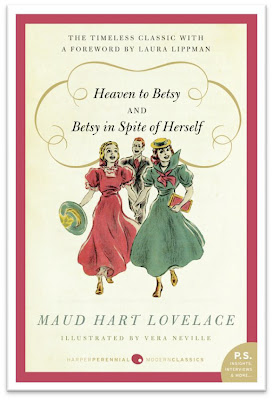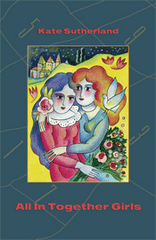











Nearly all of this week's selections were prompted by posts from fellow bloggers. Click on the names of the blogs or bloggers below to link to the posts that piqued my interest in each of these tantalizing books.
Borkmann’s Point and
The Return by Håkan Nesser: These are the second and third books in Nesser's Inspector Van Veeteren series (my library doesn't yet have copies of the first,
Mind's Eye, which was translated into English more recently than the others). Recent posts at
Crime Scraps,
Detectives Beyond Borders, and
Djs Krimiblog quickly shifted Nesser from the "I'd like to read him someday," into the "I must read him now" category for me.
Blind Justice and
Murder in Grub Street by Bruce Alexander: These are the first two books in a mystery series featuring a pair of sleuths, one a fictionalized version of historical figure Sir John Fielding (an 18th Century judge credited as co-founder of London's first police force and, incidentally, also half-brother of novelist Henry Fielding), and the other, Jeremy Proctor, a thirteen-year-old orphan newly arrived in the city and working as a typesetter's assistant on Grub Street. Julie's compelling posts about both (
here and
here) prompted me to seek them out.
Greenery Street by Denis Mackail:
Danielle's post about this one made it sound like a quality comfort read, not necessarily similar in content or style to the likes of
Enchanted April and
Miss Buncle's Book, but perhaps generating the same sort of reading experience. And the fact that Persephone Books has recently reprinted it adds to the weight of Danielle's recommendation.
A Start in Life by Anita Brookner: This is Brookner’s first novel. I've not read any of her books and, honestly, haven't felt any compulsion to do so. But
Mark Thwaite's recent post about his regard for her work made me rethink that.
The Odd Women by George Gissing: From the back cover description: "Five odd women—women without husbands—are the subject of this powerful novel, set in Victorian London, by a writer whose perceptions about people, particularly women, would be remarkable in any age and are extraordinary in the 1890s." It was
a recent post by Dorothy that piqued my interest in this one.
Unseen by Mari Jungstedt and
Lewi's Journey by Per Olov Enquist: Two very different books by very different authors. The former is the first in a mystery series set on the Swedish island of Gotland, the latter a historical novel by one of Sweden's foremost writers of literary fiction. What they have in common is that they're both translated by
Tiina Nunnally and they were both recommended by
Reg in response to my recent post seeking suggestions of novels which would expand my acquaintance with Swedish literature (and who better to get such recommendations from than the
translator of some of my favourite Swedish writers including Henning Mankell and Stieg Larsson?).
Season of Migration to the North by Tayeb Salih:
Maud Newton’s appreciation of this Sudanese novel highlighted its status as one of the few classics of Arabic literature readily available in English translation and sent me racing out for a copy.
Lost at Sea by Bryan Lee O'Malley: I've been making a few forays into the realm of graphic novels of late, and
Nymeth's post about this one made it sound irresistible.
And finally, a couple that I came up with all on my own:
A Concise History of Sweden by Neil Kent (more background for my upcoming trip to Sweden), and
Old City Hall by Robert Rotenberg (a debut crime novel by a well-known Canadian lawyer which is said to bring vividly to life the sights and sounds of Toronto, my current home).
It's a tribute to the glories of my local libraries, is it not, that I have all of these books in hand so soon after resolving to read them? (That's the
Toronto Public Library, with occasional side trips to the
York University Library, in case you’re wondering.) I love the library.
 Stuart's book, Buying Cigarettes for the Dog, first sent out into the world at its Toronto launch on April 1st, has been racking up sales and laudatory reviews ever since. In Now Magazine, Susan Cole writes: "Ross doesn't waste a word, and the impact is often breathtaking. He knows how to extend a metaphor so that even the most absurd or hallucinatory episodes – and there are many of these – convey deep meaning." In the Vancouver Sun, M.A.C. Farrant writes: "A writer with an original sensibility, he's got a gazillion curious, funny and disturbing things to say about our lives and our world. Read this book – you'll see." And in The Walrus, Mark Medley sums it up thus: "His fiction is often bold, sometimes infuriating, and always rewarding."
Stuart's book, Buying Cigarettes for the Dog, first sent out into the world at its Toronto launch on April 1st, has been racking up sales and laudatory reviews ever since. In Now Magazine, Susan Cole writes: "Ross doesn't waste a word, and the impact is often breathtaking. He knows how to extend a metaphor so that even the most absurd or hallucinatory episodes – and there are many of these – convey deep meaning." In the Vancouver Sun, M.A.C. Farrant writes: "A writer with an original sensibility, he's got a gazillion curious, funny and disturbing things to say about our lives and our world. Read this book – you'll see." And in The Walrus, Mark Medley sums it up thus: "His fiction is often bold, sometimes infuriating, and always rewarding." For Alexandra's book, Animal, tonight marks not just the Vancouver launch but the launch proper, so as of yet I can't point you to any reviews. But, judging by her previous work, and having had the pleasure of hearing her read a few of the stories from the new book while it was in progress, I have no doubt that it will be brilliant. Read the title story, "Animal," online here and see for yourself.
For Alexandra's book, Animal, tonight marks not just the Vancouver launch but the launch proper, so as of yet I can't point you to any reviews. But, judging by her previous work, and having had the pleasure of hearing her read a few of the stories from the new book while it was in progress, I have no doubt that it will be brilliant. Read the title story, "Animal," online here and see for yourself.
























